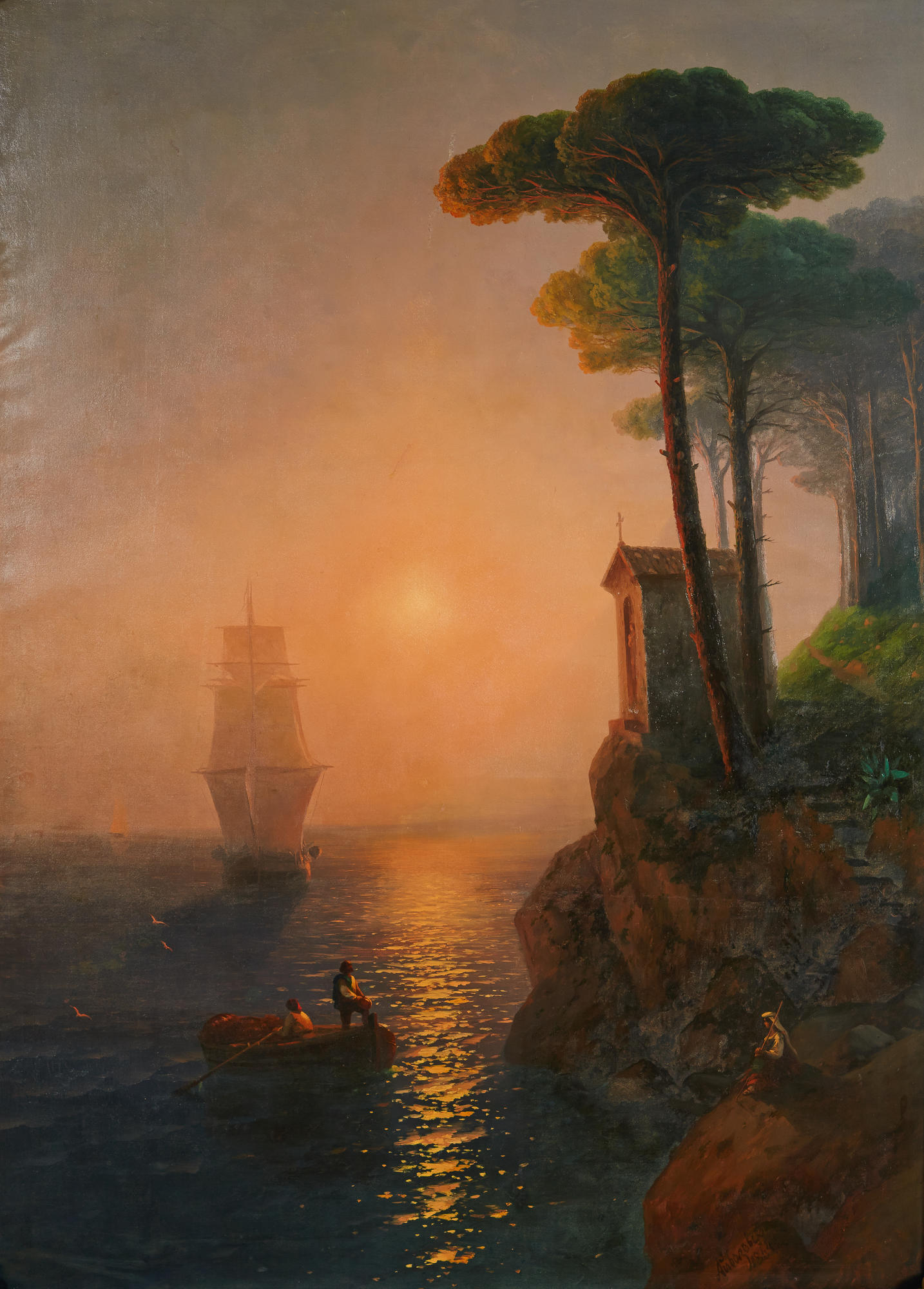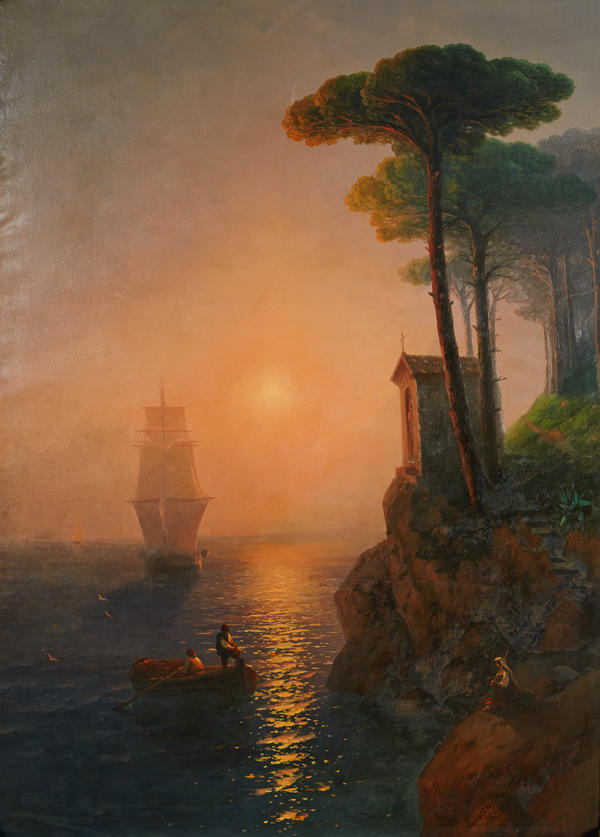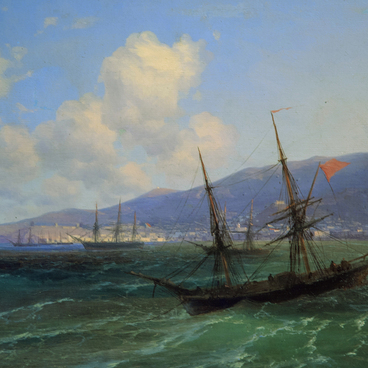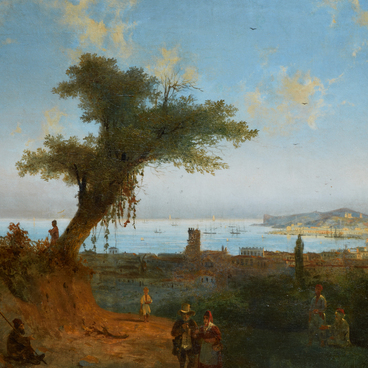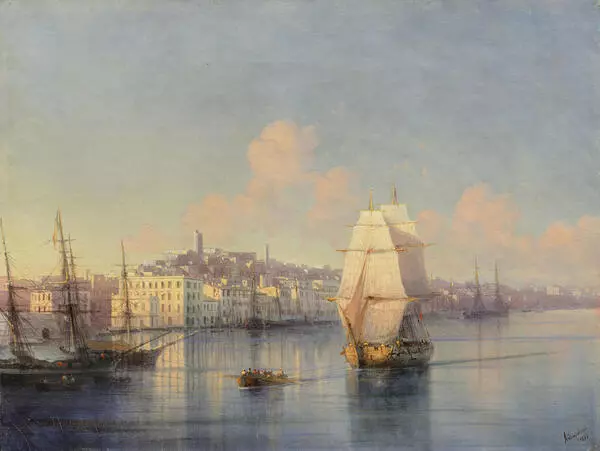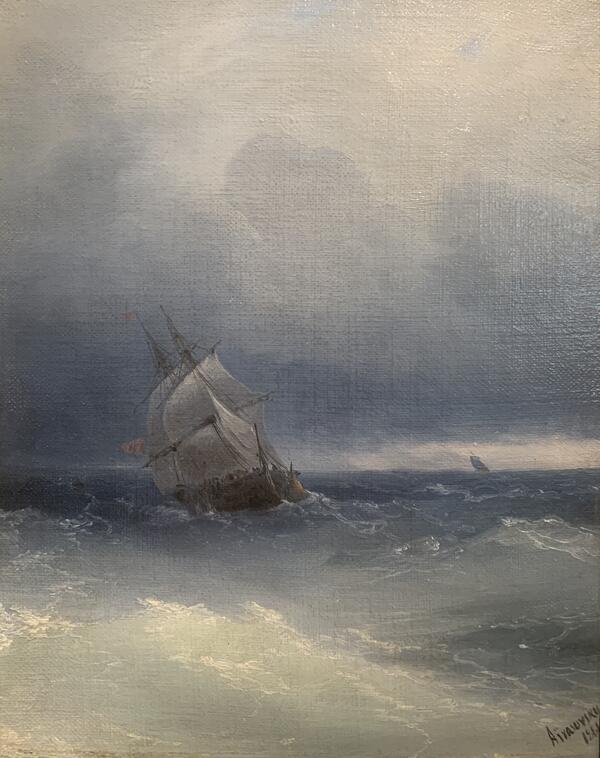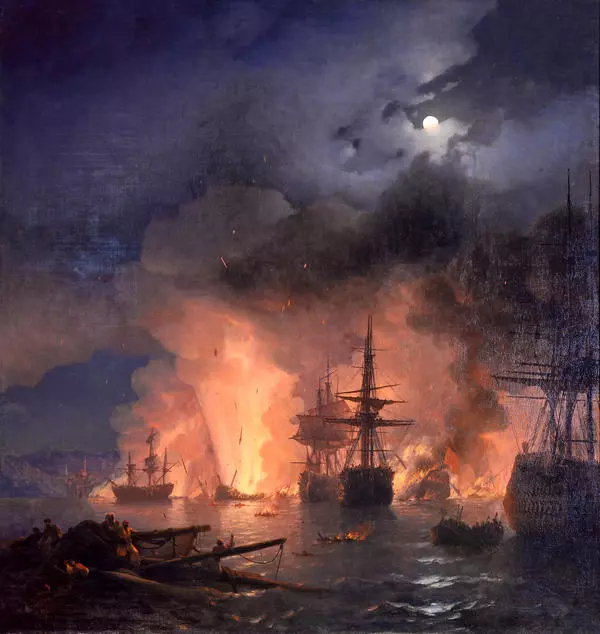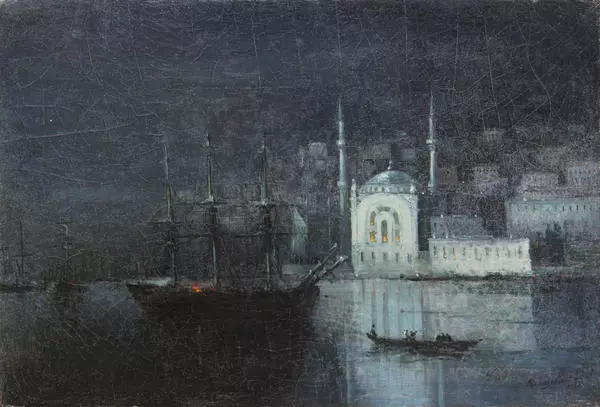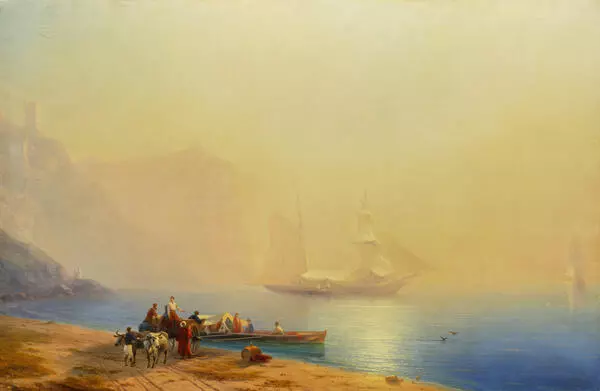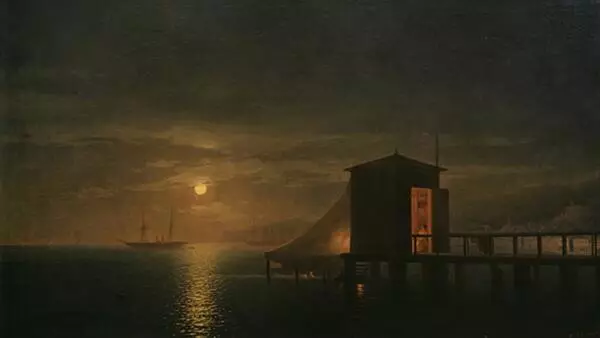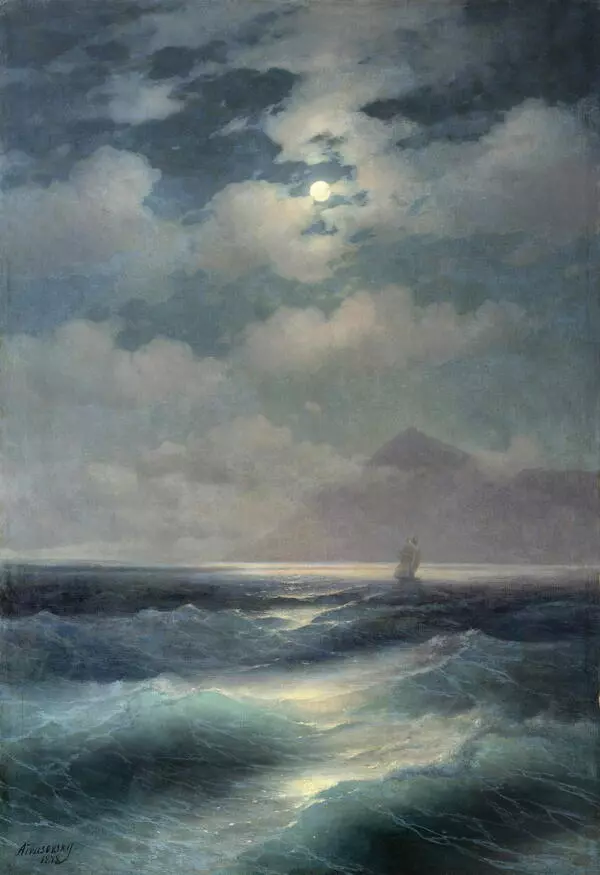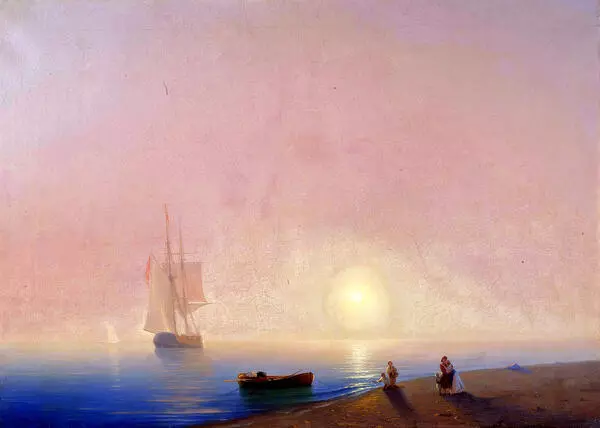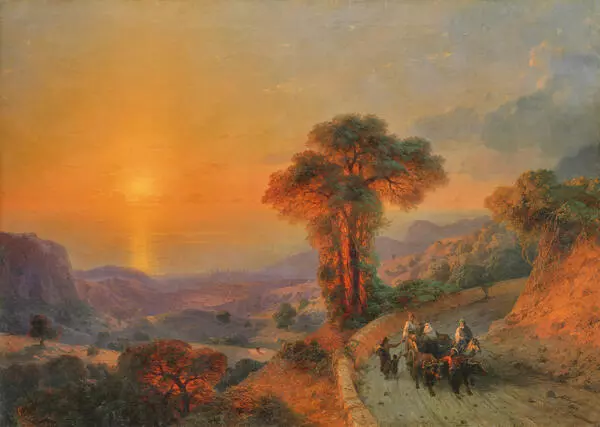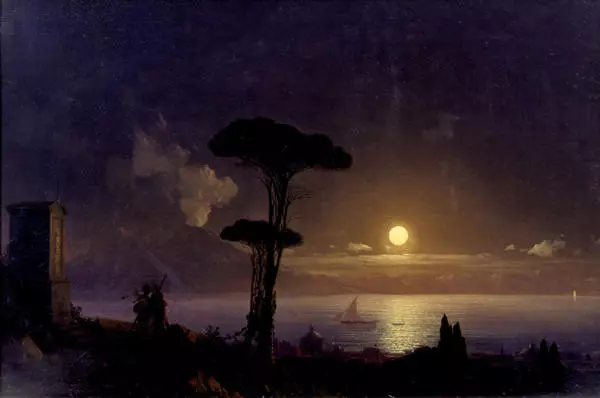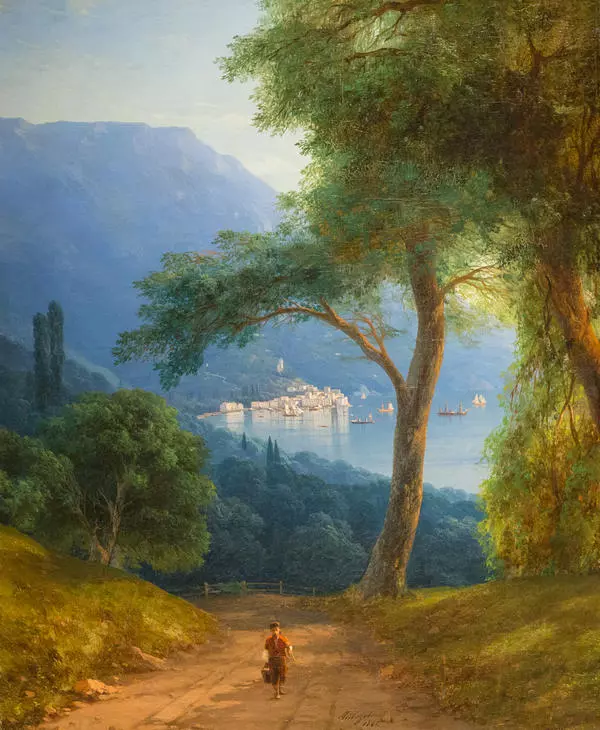From 1840 to 1844, Ivan Aivazovsky lived and worked in Italy where many of the 19th century great artists were mastering their skills. In those years, Rome was known as ‘the world’s academy of arts’. Painters whose influence was of great importance for the artistic development of the young Aivazovsky worked and became famous in Italy: Sylvester Shchedrin with his intimate landscapes, Orest Kiprensky, and Karl Bryullov. The first destination of Aivazovsky was Venice where he became closely acquainted with writer Nikolai Gogol. Then he headed south, first to Florence and further to the Bay of Naples.
During his years abroad, Aivazovsky worked in Rome, Naples, Sorrento, and Venice. He brought from Italy a vast number of pencil sketches of the places he liked, which later provided the basis for his paintings. The European fame came to the painter in Italy. Despite of being relatively young, Aivazovsky was soon accepted and appreciated in the Rome artistic circles. Aivazovsky wrote from Rome: “I saw the masterpieces by Raphael and Michelangelo, I saw the Coliseum, St. Basilica of St. Peter and St. Paul, et cetera, et cetera. When you are looking at those works of genius, and the giant buildings you feel your own misery! One day here is worth a year. As a bee, I am sucking up honey in a flower garden to then pay my tribute of gratitude to the Tzar and Mother Russia!” Since then, the bright nature of Italy never let him go and throughout his life the painter kept returning to those images.
The Foggy Morning in Italy is the quintessence of the young Aivazovsky’s genius: his passion for the sea and the vibrant southern nature, and romantic excitement. The artist painted a high coast, with the first rays of the sun glittering in the mist reflecting on the greenish surface of the sea. In the distance, we can see a ship under full sail ready to embark on its voyage. The fantastic southern nature was not a new experience for Aivazovsky. This is why his Italian landscapes to a large extent continue the motifs of his Crimean paintings. With his masterful brush strokes, the artist could convey the midday heat, the morning fog shrouding a coastal town, the sea, and the sun.
During his years abroad, Aivazovsky worked in Rome, Naples, Sorrento, and Venice. He brought from Italy a vast number of pencil sketches of the places he liked, which later provided the basis for his paintings. The European fame came to the painter in Italy. Despite of being relatively young, Aivazovsky was soon accepted and appreciated in the Rome artistic circles. Aivazovsky wrote from Rome: “I saw the masterpieces by Raphael and Michelangelo, I saw the Coliseum, St. Basilica of St. Peter and St. Paul, et cetera, et cetera. When you are looking at those works of genius, and the giant buildings you feel your own misery! One day here is worth a year. As a bee, I am sucking up honey in a flower garden to then pay my tribute of gratitude to the Tzar and Mother Russia!” Since then, the bright nature of Italy never let him go and throughout his life the painter kept returning to those images.
The Foggy Morning in Italy is the quintessence of the young Aivazovsky’s genius: his passion for the sea and the vibrant southern nature, and romantic excitement. The artist painted a high coast, with the first rays of the sun glittering in the mist reflecting on the greenish surface of the sea. In the distance, we can see a ship under full sail ready to embark on its voyage. The fantastic southern nature was not a new experience for Aivazovsky. This is why his Italian landscapes to a large extent continue the motifs of his Crimean paintings. With his masterful brush strokes, the artist could convey the midday heat, the morning fog shrouding a coastal town, the sea, and the sun.
